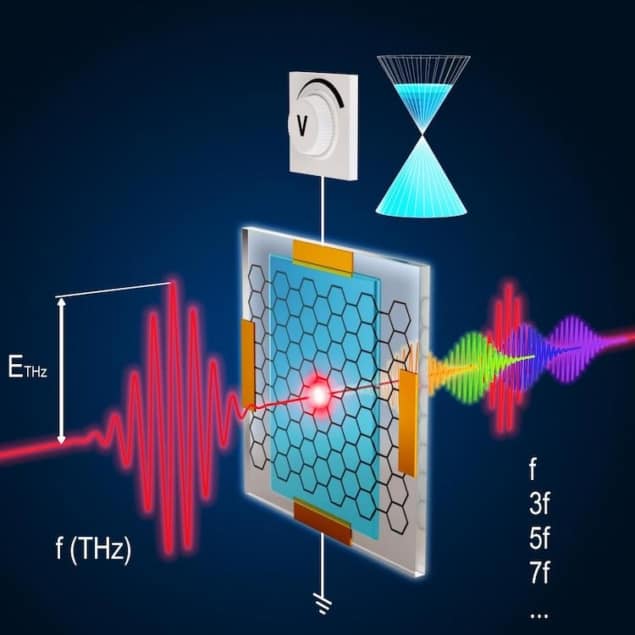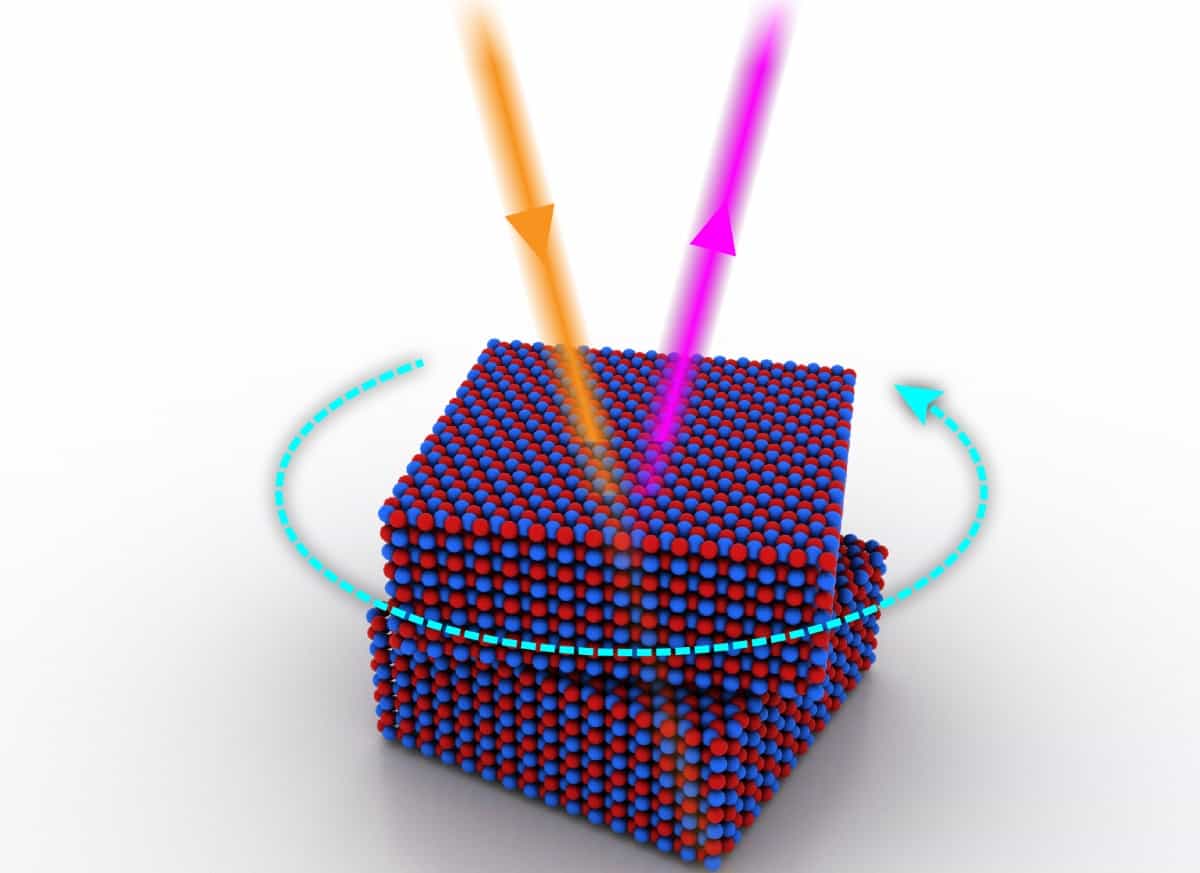
Researchers in Germany and Spain have created a transistor-like device that uses a small voltage to control the strength and frequency of electronic signals transmitted through graphene. The feat, which is detailed in Science Advances, marks an important step towards using graphene in electronic devices such as terahertz frequency converters, mixers and modulators.
Graphene – a honeycomb-like lattice of carbon just one atom thick – has several unique electronic properties. Many of them stem from the fact that it is a semimetal with no energy gap between its valence and conduction bands. In the region where these two bands meet, the relationship between the energy and momentum of charge carriers (electrons and holes) in graphene is described by the Dirac equation, rather than the standard Schrödinger equation as is the case for most crystalline materials.
High electronic conductivity and massless behaviour
The presence of these unusual band structures (known as Dirac cones) enables the charge carriers in graphene to behave like massless particles. This effective masslessness gives the electrons in graphene a very high mobility – up to 200 000 cm2/Vs at room temperature, compared to only about 1400 cm2/Vs in silicon. Such extremely high mobility means that graphene-based transistors and other electronic devices could be faster and more energy efficient than any that exist today.
Researchers recently discovered that when an electric current (or a light wave) passes through graphene, the material’s high electron conductivity and the effectively massless behaviour of its electrons changes the frequency of the current. This type of nonlinear behaviour is one of the most basic functionalities in modern electronic devices, crucial for switching and processing electrical signals.
Graphene’s nonlinearity is by far the strongest of all electronic materials, notes Dmitry Turchinovich of Bielefeld University, who co-led the latest study with Michael Gensch of the German Aerospace Center (DLR) Institute of Optical Sensor Systems and the Technical University of Berlin. The material also remains highly nonlinear even at high frequencies, extending into the technologically important terahertz (THz) range where most conventional electronic materials fail.
Tight control
While this behaviour is important for integrating graphene into electronic devices, researchers need to be able to control it first. Gensch, Turchinovich and colleagues have now demonstrated that such control is possible. In the new work, they fabricated a transistor-like device to which they could apply a gate (control) voltage via electrical contacts. They then used the device to transmit ultrahigh frequency THz signals and analysed how the frequency of these signals transformed as a function of the applied voltage.
At a certain applied voltage, the researchers observed that graphene’s normally strong nonlinear response nearly vanished. By slightly increasing or decreasing the control voltage from this critical value by just a few volts, they found they could make the material strongly nonlinear again. Once they determined the optimal gating voltage, they showed that they could alter the strength and the frequency components of the transmitted and reemitted THz electronic signals by as much as two orders of magnitude.
A missing link
Being able to control graphene’s nonlinearity in such a simple way is the “missing link” for using the material in electrical signal processing and signal modulation applications, Turchinovich says. “With this work, we have reached an important milestone on the path towards using graphene as an extremely efficient nonlinear functional quantum material in devices like THz frequency converters, mixers, and modulators,” Gensch adds.

‘Twistoptics’ produces a tunable nonlinear optical response
Gensch goes on to explain that graphene is also perfectly compatible with existing electronic ultrahigh-frequency semiconductor technology such as CMOS or Bi-CMOS. It is therefore possible to envision hybrid devices in which the initial electric signal is generated at lower frequency using existing semiconductor technology, and is then very efficiently up-converted to much higher THz frequencies using graphene – all in a fully controllable and predictable manner.
The team, which also includes researchers from the Helmholtz Center Dresden-Rossendorf, the Max Planck Institute for Polymer Research and the University of Duisburg-Essen in Germany and the Catalan Institute of Nanoscience and Nanotechnology (ICN2) and the Institute of Photonic Sciences (ICFO) in Spain, says it is now working on integrating graphene into SiGe HBT/Bi-CMOS chip technology.
"Electronic" - Google News
April 24, 2021 at 05:08PM
https://ift.tt/3sPR2H3
Transistor-like device controls graphene's electronic properties – Physics World - physicsworld.com
"Electronic" - Google News
https://ift.tt/3dmroCo
https://ift.tt/3bbj3jq
No comments:
Post a Comment